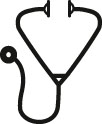Abstract

Introduction Autologous stem cell transplant (ASCT) following high-dose chemotherapy is an established treatment for patients with multiple myeloma (MM). Previous studies have aimed at identifying the minimum number of required stem cells to achieve CBC engraftment defined by an absolute neutrophil count (ANC) of >0.5 x 109/l x 3 days, hemoglobin (HGB) of >8 g/dL and platelets count (PLT) of >20 × 109/L free of transfusion requirements. However, for diseases like MM, where stem cell transplantation is followed by prolonged maintenance, adequate CBC recovery to near normal levels is crucial for successful initiation and continuation of completion of maintenance. Various studies have established the impact of the number of infused CD34+ stem cells as the strongest predictor of cell counts recovery, yet the ideal amount of infused stem cells and ideal time between ASCT and initiation of maintenance remain elusive and vary greatly between institutions. Current practice is to wait at least 100 days after ASCT, however this prolonged time interval could lead to regrowth of MM cells, particularly in aggressive disease. In an effort to determine which parameters influence count recovery post ASCT we investigated 780 MM patients at the University of Arkansas for Medical Sciences
Methods We carried out a single center retrospective assessment on patients who received their initial ASCT following induction chemotherapy for newly diagnosed MM from 2015 to 2019. All patients had a bone marrow (BM) examination post ASCT, which typically precedes the immediate initiation of maintenance. The time point of BM assessment was used to determine count recovery and the time from ASCT to BM assessment was evaluated as an independent parameter. We further examined various factors that could potentially affect CBC recovery aside the total CD34+ cell dose infused. Covariates examined were age, race, gender, CD34+ cell dose, Karnofsky score and conditioning regimen received.
Results A total of 780 patients were analyzed using a linear regression model. The median age was 62 years (range: 29-82). 44.2% (345/780) were female, 78.8% (615/780) identified as Caucasians and 17.7% (138/780) as African Americans. High dose melphalan was the conditioning regimen in 88% (687/780) patients followed by low dose melphalan in combination with Cisplatin, Adriamycin, Cyclophosphamide and Etoposide (PACE) in 8.4% (66/780) and BEAM conditioning in 3.7% (29/780). Median number of CD34+ stem cells infused was 5.6 x106/kg (0.9-13.4) and median time from ASCT to assessment of bone marrow examination and count recovery, was 60 days ( 14-365). Overall, infusing 5.0 x106/kg CD34 cells lead to a robust CBC 9 weeks post ASCT. Estimated ANC was 2.86 (CI95%: 2.70-3.01) with no significant changes with higher numbers of stem cells infused or longer time to assessment. Estimated HGB was 10.93 (CI95%: 10.81 - 11.04). An increase of 1 × 106 CD34 cells was expected to increase HGB by 0.10 (CI95%: 0.02 - 0.14) and waiting an additional week to assess count recovery was expected to increase hemoglobin by 0.03 (CI95%: 0.02 - 0.05). Estimated platelet count for a patient receiving 5 × 106 CD34 cells after 9 weeks of ASCT was 157 (CI95%: 151 - 163). An increase of 1 × 106 CD34 cells was expected to increase platelet counts by 6 (CI95%: 4 - 9). Males had HGB levels that were 0.6 (CI95%: 0.36 - 0.78) higher and ANC counts that were 0.3 (CI95%: 0.006 - 0.6) higher than females, while African Americans had HGB levels that were 0.5 (CI95%: 0.2 - 0.8) lower and PLT that were 18 (CI95%: 4 - 32) higher than Caucasians. A 10-point increase in Karnofsky performance scores corresponded to a 0.2 (CI95%: 0.1 - 0.4) increase in HGB and a 9 (CI95%: 3 - 15) increase in PLT. Interestingly, there were no significant alterations when accounting for age. More aggressive conditioning regimen, such as BEAM, were associated with lower PLT and ANC counts, albeit given the small number of patients receiving BEAM, this was not significant.
Conclusion The infusion of at least 5 x106 CD 34+ stem cells leads to robust count recovery 9 weeks post ASCT in MM patients. These results suggest that initiation of maintenance could be considered at an earlier time point than the accepted 100 day mark. Earlier initiation of maintenance could be crucial especially for high risk patients with highly proliferative disease, where prolonging the time from transplant to maintenance can potentially lead to regrowth of aggressive clones.
Disclosures
van Rhee:Janssen Pharmaceuticals: Research Funding; Karyopharm: Consultancy; GlaxoSmithKline: Consultancy; Takeda: Consultancy; Bristol Myers Squibb: Research Funding; EUSA Pharma: Consultancy. Schinke:Janssen: Honoraria.
Author notes
 This icon denotes a clinically relevant abstract
This icon denotes a clinically relevant abstract
Asterisk with author names denotes non-ASH members.

This feature is available to Subscribers Only
Sign In or Create an Account Close Modal